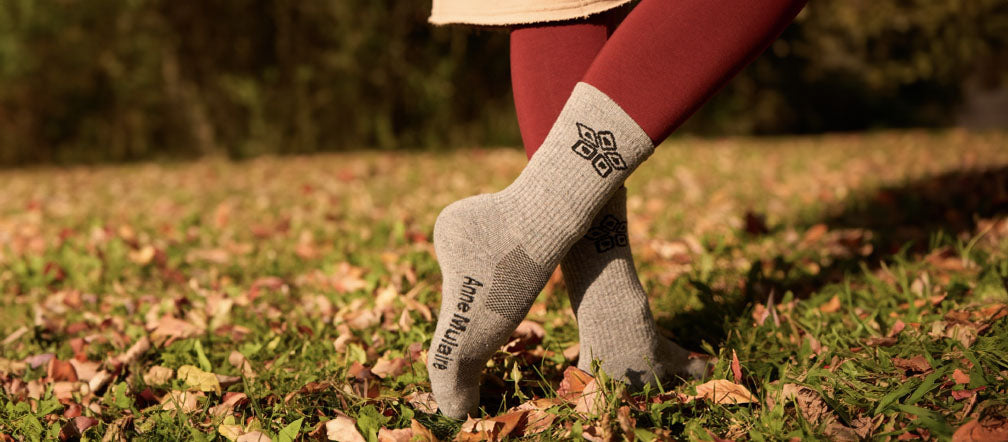What does slow living really mean?
In a world that often seems to move at breakneck speed, more and more of us are drawn to the idea of slowing down. This push seemed to be strengthened during the COVID-19 pandemic when we had little choice but to slow down. A Time article explores how society seemed to shift during the pandemic, stating that our identities were challenged, and the value of authentic living blossomed. A study by Pew Research Center found that work, material goods and the opinion of others’ became less important.
These shifts fed the resurgence of a lifestyle trend called “slow living”. Getting back to our roots, spending time doing what you enjoy, and slowing down are more appealing than ever. And while it may sound like a fun, simple lifestyle change, the impacts of slow living are far greater than you may think.
In this article, we’re diving into the essence of slow living and its historical roots in order to understand its current popularity. Finally, we’ll explore how this movement can influence your fashion choices, and how it’s changing the world of fashion entirely.
What is Slow Living?
At its core, slow living is a mindful and intentional approach to life. It challenges people to focus on quality over quantity, presence over productivity, and appreciation over accumulation. Some mantras you may hear in slow living are to savor the moment, prioritize meaningful connections, and cultivate a deeper connection with oneself and the world around them.
Slow living is not about doing everything at a snail's pace; It’s about savoring life's experiences and finding fulfillment in the present moment.
The History of Slow Living: Origins and Evolution
Slow living started in Italy as a response to fast food — believe it or not.
In the 1980’s, a McDonald’s opened up in Rome. A group of activists formed a movement called Slow Food that called for people to remember the joys of cooking, the importance of hand-made, and that food was meant to be enjoyed with loved ones, not grabbed and eaten on the go.
Over time, the concept expanded beyond the culinary world, giving rise to the broader slow living movement. It all followed the same ideals: Going back to the roots, enjoying the time things take to complete, and embracing tradition.
Today, slow living encompasses various aspects of life, including work, relationships, and, notably, fashion.
Why is Slow Living Growing in Popularity?
As we mentioned, the increasing popularity of slow living can be connected to a collective societal yearning for a more meaningful and balanced life. We often glorify busyness and constant productivity. That changed for many people in the early 2020’s.
We’re looking for an antidote – a way to reconnect with our values, relationships, and the natural rhythms of life. Slow living offers a type of counter-narrative and quiet resistance to the capitalism that runs much of society.
How Slow Living Impacts Fashion and Clothing Choices
Slow living has been growing its influence on the fashion industry. In fashion, slow living challenges the way we approach clothing and style. It’s the literal opposite to fast-fashion and seasonal trends.
The focus of slow living in fashion — or simply slow fashion — is on long-lasting, high quality, and multi-use staple pieces that will last for years. It isn’t just about style, either. Slow fashion relies on high quality materials and timeless design.
Anne Mulaire, for example, embraces the slow fashion shift by offering small-batch, zero-waste clothing that is built to last. Slow fashion encourages consumers to make mindful choices, opting for timeless pieces with enduring style and durability.
Slow fashion isn’t just the responsibility of clothing companies, either. Shoppers and consumers can and must take responsibility to be thoughtful shoppers. This can mean:
- Research the brands you buy.
- Being selective about the pieces you purchase and leaning away from impulse buys.
- Being willing to spend more on clothing that will last longer.
5 Tips for Getting Started with Slow Living
If the concept of slow living appeals to you, there are ways to incorporate it into your daily life. Long lasting changes happen slowly, over time, so there’s no need to jump right in and change your entire life in a day or two. Here are 5 things you can do to get started with slow living.
1. Practice Mindfulness
Slow living begins with being present in the moment. Take time to appreciate the simple joys of life, whether it's savoring a cup of tea, enjoying a walk in nature, or relishing a quiet moment of reflection. Journaling is a great way to get started with mindfulness.
2. Simplify Your Wardrobe
If slow fashion is something you’re interested in, get started by being honest with yourself about your wardrobe and shopping habits. Challenge yourself on why you buy new clothes and where you’re shopping for them. We encourage you to shop timeless styles that can be mixed and matched, reducing the need for constant shopping and promoting a more sustainable relationship with fashion.
3. Prioritize Quality Over Quantity
When making purchases, opt for well-made items that are built to last. Consider the craftsmanship, materials, and ethical practices behind the products. Investing in quality pieces may initially cost more, but their longevity and timeless appeal make them a sustainable choice in the long run. This is true for clothing, but also for everything else! Furniture, towels, decor or art, etc. Quality should always be top of mind.
4. Support Sustainable Brands
Seek out brands that align with the principles of slow living and sustainable practices. There are websites like Good On You that let you check the reputation and practices of brands.
5. Create Meaningful Connections
Slow living extends beyond personal practices and consumerism. It’s also about your everyday relationships. Foster meaningful connections with those around you, whether it's friends, family, or your local community. Building a support network enhances the sense of fulfillment and connection integral to the slow living philosophy.
Slow Living: A Lifestyle Movement That’s Here To Stay
Slow living is not just a lifestyle — it's a mindset that has the power to reshape the way we live and interact with the world. Anne Mulaire's dedication to slow fashion shows just how much this philosophy can be embraced into the fabric of our lives. There’s joy to be found in creating a more intentional, sustainable, and fulfilling existence. As you embark on your own slow living journey, remember that every small step counts, and there’s no change too small to make a difference.







